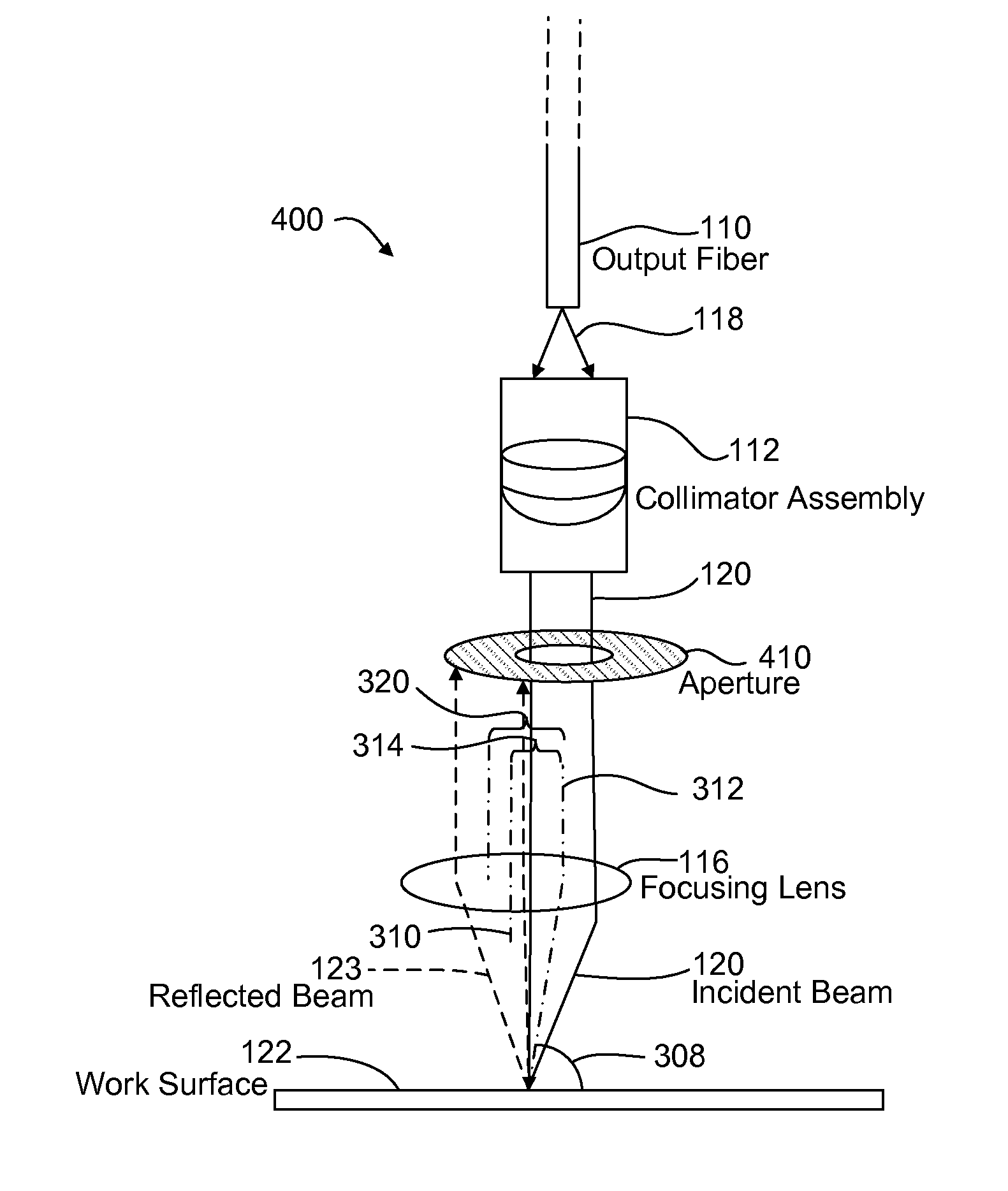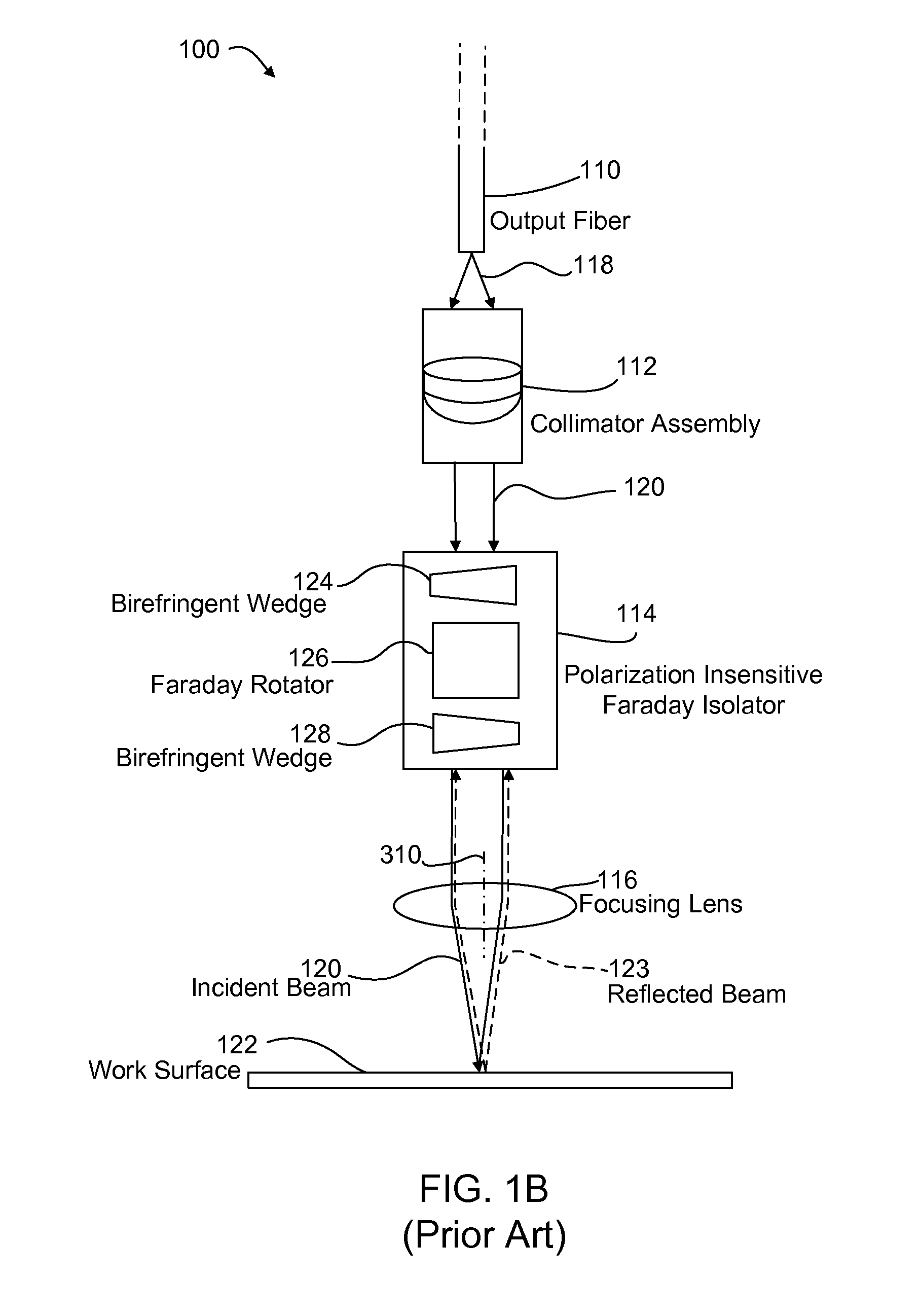Reducing back-reflection in laser micromachining systems
a micro-machining system and laser technology, applied in lasers, laser beam welding apparatus, manufacturing tools, etc., can solve the problems of laser instability or damage to certain types of lasers, damage to seed lasers in high-power master oscillators, and damage to both output fibers and gain fibers, so as to reduce or prevent back-reflection, reduce the diameter of reflected beam, and increase the divergence angle of reflected laser beam
- Summary
- Abstract
- Description
- Claims
- Application Information
AI Technical Summary
Benefits of technology
Problems solved by technology
Method used
Image
Examples
Embodiment Construction
[0030]Various systems and methods described herein reduce or prevent back-reflections from coupling into an output fiber of a laser processing system without using bulky and / or expensive isolators. In one embodiment, a focusing lens is placed in the beam path at an offset distance from the beam propagation axis so as to impart a non-vertical “angle-of-attack” to the incident beam with respect to the work surface. This provides a spatial separation between incident and reflected beam paths without tilting the entire beam delivery subsystem with respect to the work surface. In one embodiment, an aperture further blocks the back-reflected laser beam from reaching the output fiber. In addition, or in another embodiment, a secondary beam positioner scans an incident laser beam across the focusing lens at an offset from the focusing lens's primary axis such that a scanning focal plane is substantially parallel to the work surface.
[0031]Other embodiments disclosed herein effectively reduce...
PUM
| Property | Measurement | Unit |
|---|---|---|
| angle of incidence | aaaaa | aaaaa |
| angle of incidence | aaaaa | aaaaa |
| angle of incidence | aaaaa | aaaaa |
Abstract
Description
Claims
Application Information
 Login to View More
Login to View More - R&D
- Intellectual Property
- Life Sciences
- Materials
- Tech Scout
- Unparalleled Data Quality
- Higher Quality Content
- 60% Fewer Hallucinations
Browse by: Latest US Patents, China's latest patents, Technical Efficacy Thesaurus, Application Domain, Technology Topic, Popular Technical Reports.
© 2025 PatSnap. All rights reserved.Legal|Privacy policy|Modern Slavery Act Transparency Statement|Sitemap|About US| Contact US: help@patsnap.com



